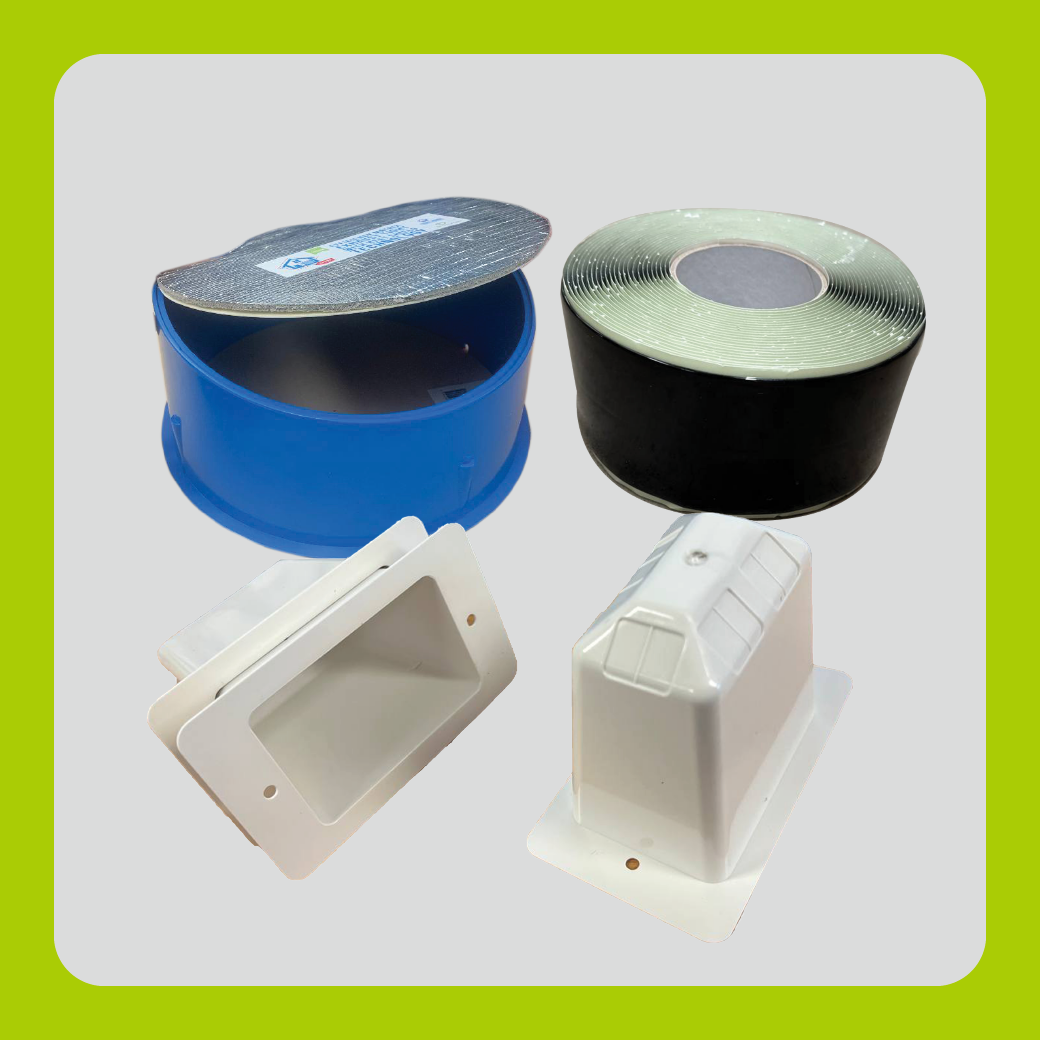How to Draught-Proof your Home and Drive Down Energy Bills
Easy Solutions for Energy Saving - driving down your heating and cooling bills systematically.
Here are some simple and cost-effective ways of driving down the energy costs of heating & cooling your home or business, making them more comfortable.
Fixing these very common problem areas, can make a big difference!
1. Draught-proof external doors & windows. This also decreases dust, fumes and external noise entering your home from outside and from the garage. Use the Efficiency Seal Door & Window Seal around the sides and the across top of external doors/windows, and the door from the garage into your home:
- Use a draught/weather seal or strip at the bottom of the external doors:
2. Draught-proof your exhaust fans in wet areas (the toilet, bathroom and laundry). This stops air moving backwards from the ceiling space into the room when the fan is turned off. This may involve placing an exhaust fan draught stopper over the exhaust fan in the ceiling space or replacing the fan with one that has an in-built damper. Preferably, all exhaust fans should not vent into the roof space at all, but to the outside of the building via the roof or below the eaves.
3. Sealing up any old wall vents with plaster or closed cell foam backing rod. Alternatively you could use clear contact to cover them.
4. Covering Downlight holes through the plaster in your ceiling. The downlight Cover promotes draught-proofing, improves the insulation coverage, provides a fire-rating and improves sound-proofing of your ceiling. This solution can only be used for LED downlight fittings. Alternatively use IC-4 rated downlight fittings which can be covered with insulation.
5. Install door vents into internal doors to wet areas (bathrooms, toilets, and laundry) to improve the air-flow and ventilation. It allows the exhaust fan to work more effectively to reduce humidity, therefore reducing mould growth. It is also a good idea to replace exhaust fans with ones that have an in-built humidity sensor so that they turn on automatically when the moisture content of the bathroom or laundry is high, and then turn off automatically once the humidity level comes down.
6. Caulking for Draught-proofing
- Caulking the gaps around window and door architraves adjacent to the wall, especially across the top (where it's not easily visible).
- Caulking the gaps around the skirting boards at the wall and floor junction.
- Sealing up holes inside the kitchen, laundry and bathroom cabinets where plumbing and services go through the plaster.
- If you have ducted heating, find the return grill, take it off the wall to inspect and ensure the cavity behind it is well sealed.
- Sealing up hidden holes behind fridge, dishwasher and oven.
6. Cover up all evaporative cooler vents during the winter heating period. Open vents act like chimneys during winter, and suck the warm air from the house. Seal up an unused fireplace as this makes a room harder to keep cool in summer and sucks warm air out of a room in winter when not in use.
7. Improve the insulation coverage of your home. Check the coverage of the insulation in your ceiling space and make sure any gaps are covered and that it is fully abutting the plasterboard. Redistribute evenly and top up as necessary. Use expandable foam (in a can) to seal hard to reach areas:
- Make sure the manhole is adequately insulated and forms a good air seal when closed:
- sealing the internal wall cavities from inside the roof space
- Sealing the wall to ceiling junction:
- Check gaps and holes in cavity sliding door pockets from above. Internal wall sliding doors can contribute significantly to air leakage.
...And, more expensive but definitely worth considering...
8. Insulate under the floorboards with spray polyurethane foam. This also seals up the quite significant draughts from the gaps between floorboards. This is not a DIY job, but make sure the installer also covers the bottom of external walls to prevent wall insulation from falling. Also, ensure the installer is reputable.
9. Remove old box (wall) air conditioners. They are grossly inefficient and leak lots of air. Use split systems for Heating & Cooling, and when they are being installed ensure the contractor understands that all the penetrations through the wall need to be made airtight.

